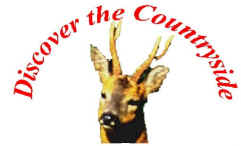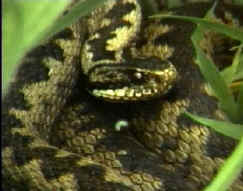
Lowland Heath |
||
| Here is one of my
selection of puzzles based on the Natural World topics, which I talk about at the
Woodland Education Centre. Wow, there's even a "Ranger's Bad Joke" at the bottom
of the page. Before you start you can find out about Lowland Heath by reading the article
below. All the answers are in the article. Print out the page and have fun! |
||
|
||
| This means that many of the
species which live on heathland are under threat. When you visit a heathland you might
think that there is little wildlife present, as you gaze over the open expanse of heather
and gorse, intermingled with grasses, bracken and scattered trees such as Silver Birch.
However it is actually seething with life. At least 5,000 different species of
invertebrate actually live on heathland. These invertebrates include wonderfully marked
butterflies such as the Silver-studded Blue butterfly. You might also see Golden Ringed
dragonflies acrobatically darting about as they catch insects on the wing. On the ground,
bright green Tiger beetles rush about hunting even smaller insects. Birds such as the
Dartford Warbler and the Nightjar also live on heaths, together with reptiles such as the
adder and lizard. If you go out to a Lowland Heath in midsummer at dusk you might even
hear the sound of the male nightjar and witness its
territorial displays. As you look around you might also see rounded hillocks of earth which are now overgrown with vegetation. These are ancient burial mounds dating back to as long ago as the Bronze age. Even before this, neolithic (stone age) people lived on heaths. Indeed it is thought that they created some of the first heaths, through clearing the original woodlands and then grazing their stock in the newly created open areas. Grazing stock, such as sheep and cattle, in these areas, favoured plants like heather because the animals didn't actually like to eat them! This meant that the animals would eat the grasses and young tree seedlings instead. Where the soils were poor, sandy and acid in nutrients, this also favoured heath-type plants and gradually the landscape which we now term Lowland Heath came about. Of course, in modern Britain, you don't see so many animals grazing on heaths. This means that many of the few heaths that remain are being taken over by trees such as Silver Birch. Silver Birch trees are known as a pioneer species, because they are often the first trees to become established in an area. This invasion by trees continues year after year and the habitat is altered. Eventually slow growing large trees such as oak dominate. The area gradually becomes a dense woodland and all the plants and animals which can only live on a heathland are lost. This process of change is known as sucession. The surroundings have been changed in such a way that conditions favour different plants and animals. Today, heaths need management in order to prevent trees and other unwanted vegetation becoming dominant. Management may include the introduction of grazing animals. Where there are too many trees these will have to be reduced in number. This type of work is essential if more of this endangered habitat is not to be lost.
|
NEW! Click Here for the new interactive version of this crossword! |
The Lowland Heath Crossword
|
 |
||||||||||||||||||||||||
NEW! Click Here for the new interactive version of this crossword! |
Word Search
|
|
||||||||||||||||||||||||||||||||||||||||||||||||||||||||||||||||||||||||||||||||||||||||||||||||||||||||||||||||||||||||||||||||||||||||||||||||||||||||||||||||||||||||||||||||||||||||||||||||||||||||||||||||||||||||
Now make as many words as you can from the word 'Lowland Heath'.
You can use each letter from the two words, only once, per word that you make.
Ranger's Bad Joke! Why couldn't the viper wipe her nose? |
|
|
| Answer | ||
| Ranger's
Puzzle Page created by Alan Crofts, Countryside Ranger Copyright © Offwell Woodland & Wildlife Trust Website http://www.go.to/offwell |
PRODUCED BY THE OFFWELL WOODLAND & WILDLIFE TRUST WITH THE SUPPORT OF THE HERITAGE LOTTERY FUND



